How do you Grow Thyme in a Garden?
This can be a difficult question to answer for gardeners because of numerous factors including climate, soil, and experience level.
This article will help solve this problem and give thyme gardeners Easy-to-Follow Steps on growing thyme both indoors and in a garden.
And I recommend scrolling to the bottom of this page to find answers to frequently asked questions most gardeners have when growing thyme.
[toc]
#1. Plant One of These 3 Types of Thyme
A. Common Thyme)
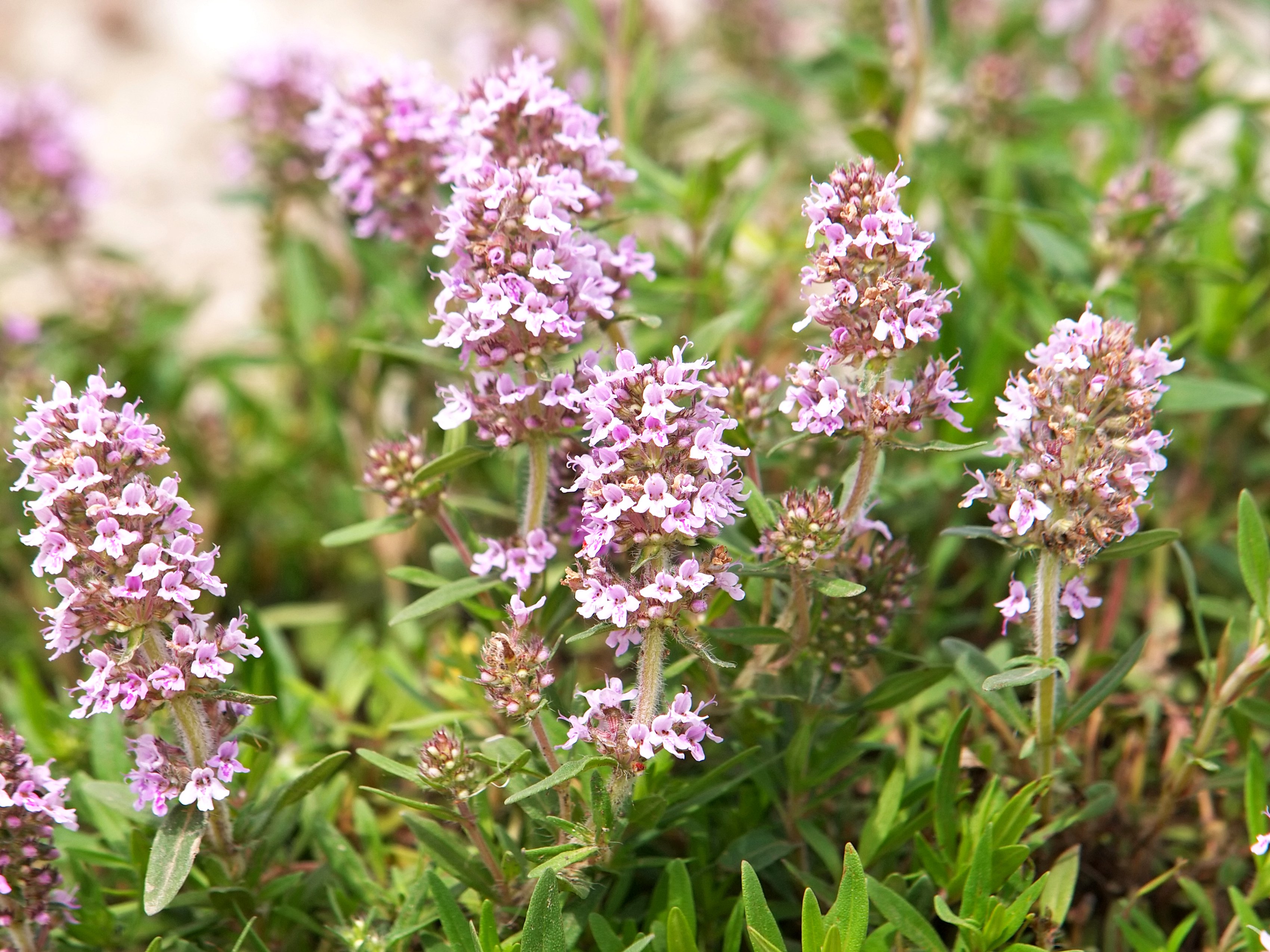
- Scientific Name: Thymus Vulgaris
- Hardy Zone: 4-8
- Size: 1 foot by 3 feet
- Life Cycle: Perennial
Common Thyme is an incredibly drought-resistant herb that grows in a prostrate form.
Grow Common Thyme if you live in a climate that gets long periods of heat or lack of rain.
It has yellow, variegated foliage, is great as a garden border, and is an unbelievable herb for cooking.
Not only this, but Thyme is a great plant for attracting bees.
B. Lemon Thyme
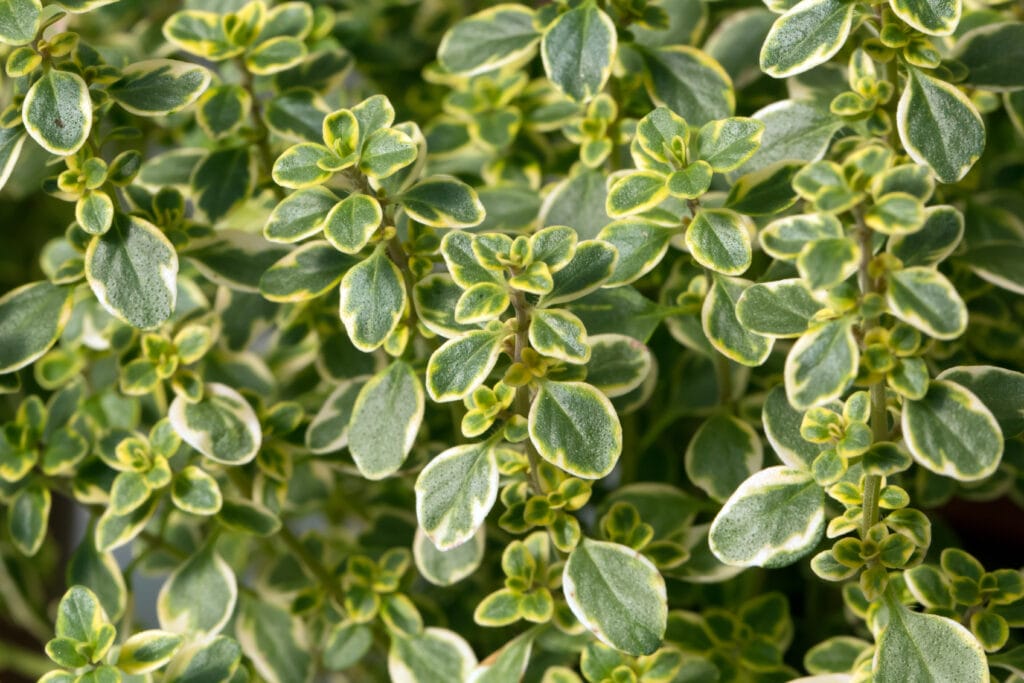
- Scientific Name: Thymus Citridorus
- Hardy Zone: 5-9
- Size: 1.5 feet by 3 feet
- Life Cycle: Perennial
Lemon Thyme grows upright, has a silver and gold color, and a strong lemon scent.
Lemon Thyme is another unbelievable kind of Thyme that should be used for cooking. Because it can lose flavor early, it should only be used at the end of cooking and is great for chicken and poultry dishes.
Grow Thyme is you want to Repel Mosquitoes and Deer!
- RELATED: Natural Mosquito Repellent Plants
C. Woolly Thyme
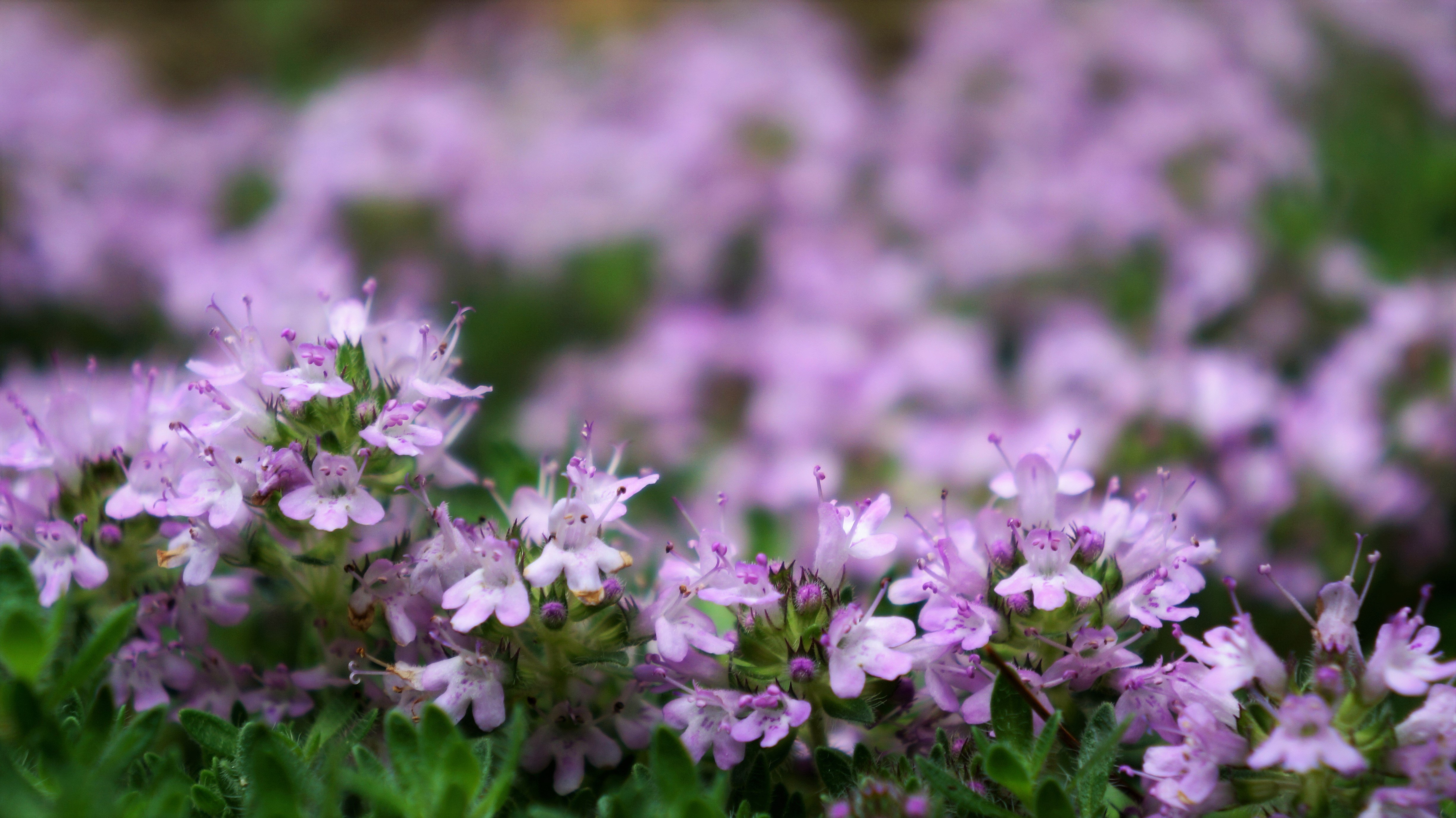
- Scientific Name: Thymus Serpyllum
- Hardy Zone: 6-8
- Size: 3 inches by 3 feet
- Life Cycle: Perennial
Woolly Thyme grows in a prostrate form, has a gray leaf color, and is perfect for rock gardens.
Grow Woolly Thyme if you want a great companion plant in herb or rock gardens.
In addition, this type of Thyme is perfect for ground cover.
#2. Start Your Seeds Indoors!
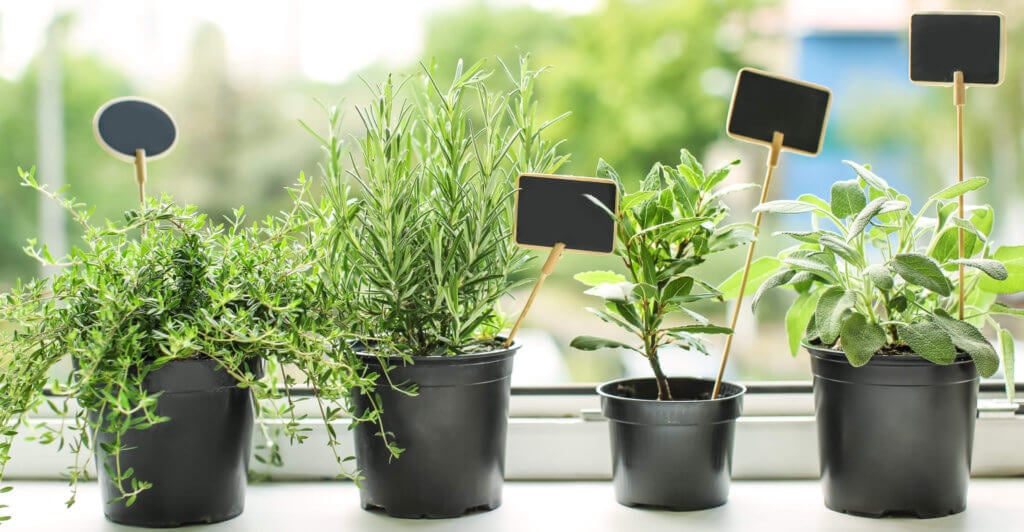
If you want to harvest your thyme quicker then START YOUR SEEDS INDOORS!!!!
Step 1 – Begin planting 8 to 10 weeks before the last frost
- Start your thyme seeds inside 8-10 weeks before you plan on moving them into your garden or a large pot.
- Begin by filling a 3-inch peat pot 80% full with your potting mix.
- Immediately after, spray your soil 5-10 times. The soil should be a dark brown color and damp to the touch.
Step 2 – Use 2 Seeds per hole!
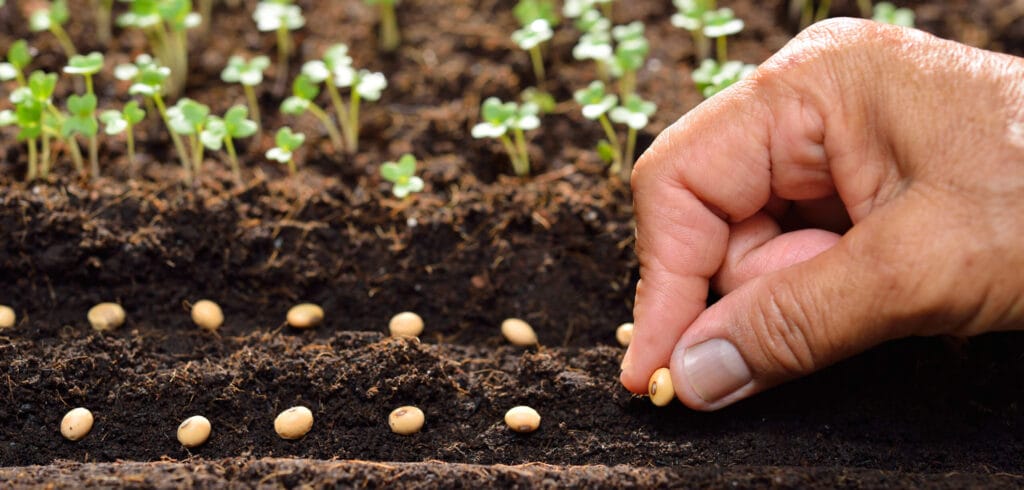
- Use the tip of a pencil to make a circular motion to form a tiny hole.
- Then place 2 seeds into the hole and brush the soil over the seeds
- Next, spray 5 to 8 times again.
Step 3 – Provide your Seeds with 8 Hours of Sunlight
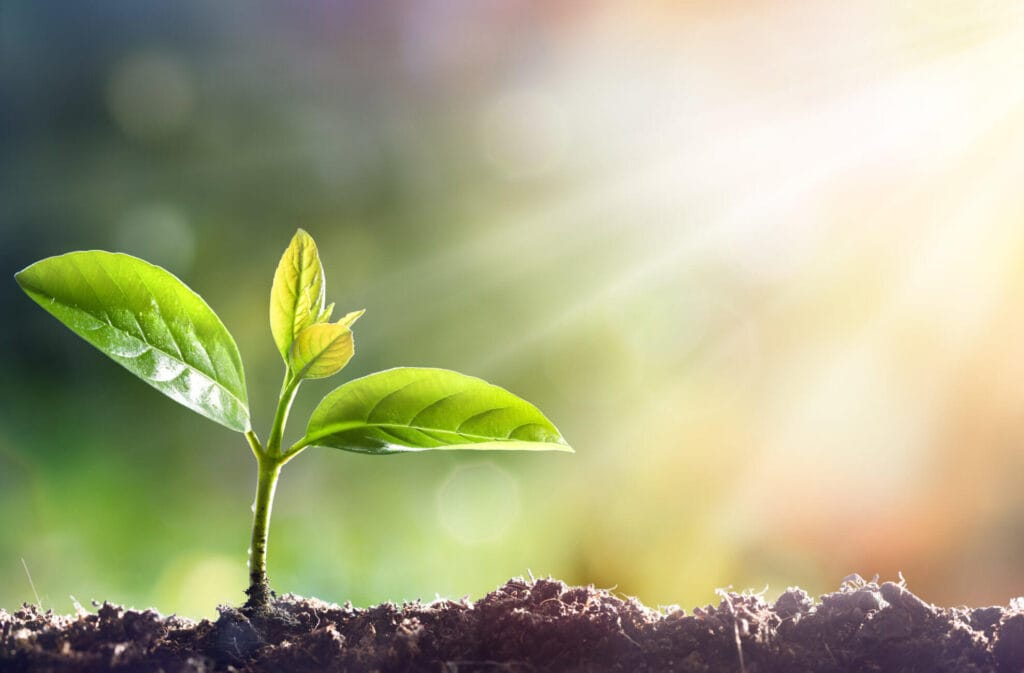
- After planting your seeds place your peat pots in direct sunlight or under your grow light for 8 hours a day.
- Anything closer will burn the seeds. Anything further away with not provides enough heat and light.
You will also need to make sure the room temperature is around 70 degrees Fahrenheit.
- If the air temperature does not stay around this temperature then your seeds will not germinate or pop through the soil.
If you don’t have an area that will stay consistently around 70 degrees, I would recommend using a Plant Heating Mat.
- A Plant Heating Mat is the perfect way to keep your pots and seeds at a consistent temperature that we may not otherwise be able to.
Step 4 – Spray, Spray, Spray
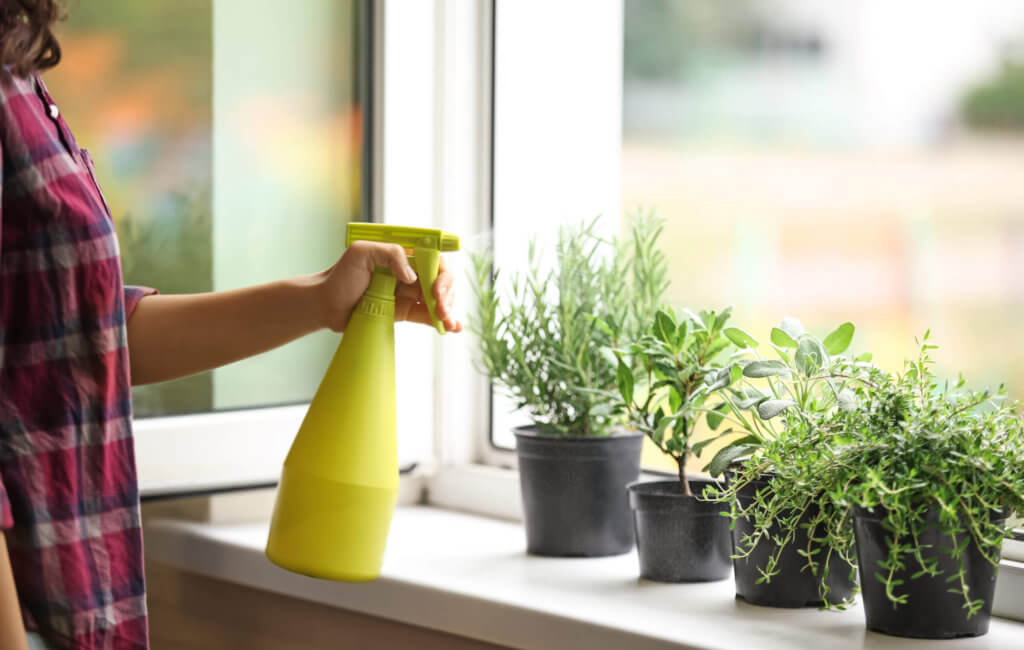
- After your initial planting, you will want to spray the soil twice a day for the next 14-20 days.
- It will take approximately 14-20 days for your seeds to germinate. Do not worry if it takes a few days later as each growing situation is different.
- After your seed germinates, continue spraying twice a day for the next 5-8 weeks.
Step 5 – At 3 inches tall, Transplant your Thyme
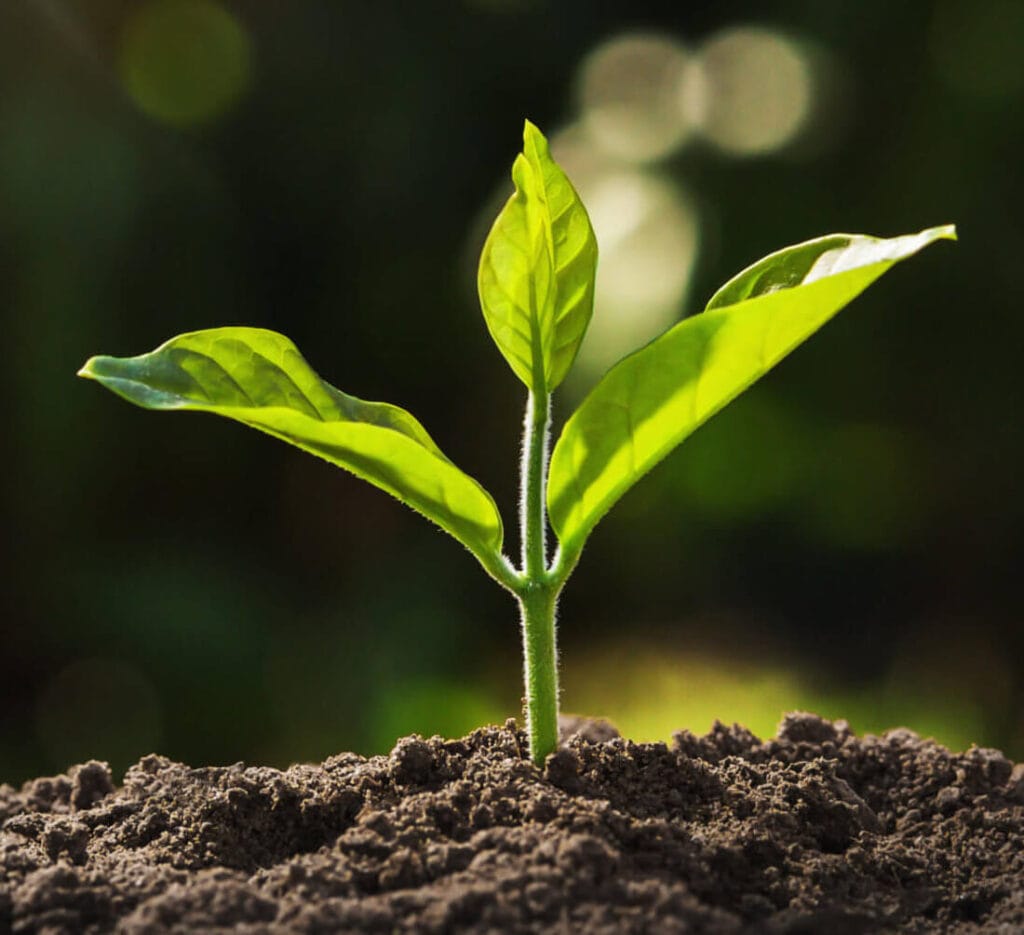
- Once your Thyme reaches 3-4 inches tall you will either want to move them into your larger container or move them outside.
- When moving your thyme to a larger pot you will want to add a well-draining potting mix to it. This will provide your growing herb the nutrients it needs to become bigger and more flavorful.
- If you move your thyme plants into a larger container you can continue to water them twice a day until they are ready to be harvested.
It should be noted that you should only move your thyme in its container outside only if the last frost has occurred.
- View Your Hardy Zone and Last Frost HERE.

- If you live outside these zones I recommend keeping your thyme in its container indoors.
Step 6 – Location In A Garden is ESSENTIAL!!!
- If you are transplanting your thyme into a garden you should find a spot that receives full sunlight and has well-draining soil.
Thyme grows very well with other plants like Brussel sprouts, cabbage, and tomatoes. It also grows well near strawberries.
- When transplanting your thyme into a garden you will want to dig a hole that is the size of your plant root ball. The root ball is where the roots meet with the soil.
If you are transplanting several thyme plants keep them approximately one to two feet apart.
- Next, add a handful of loam potting mix, cover it with soil, and water it for 30 seconds.
Your soil pH should be neutral to slightly acidic (6.5-8.5) for the thyme to grow best. You can test the pH of your soil with a soil pH meter.
- Water your thyme once a day until it is ready for harvest.
If you learn better watching a video then I recommend watching the below youtube tutorial:
#3. How to Grow Thyme Outdoors
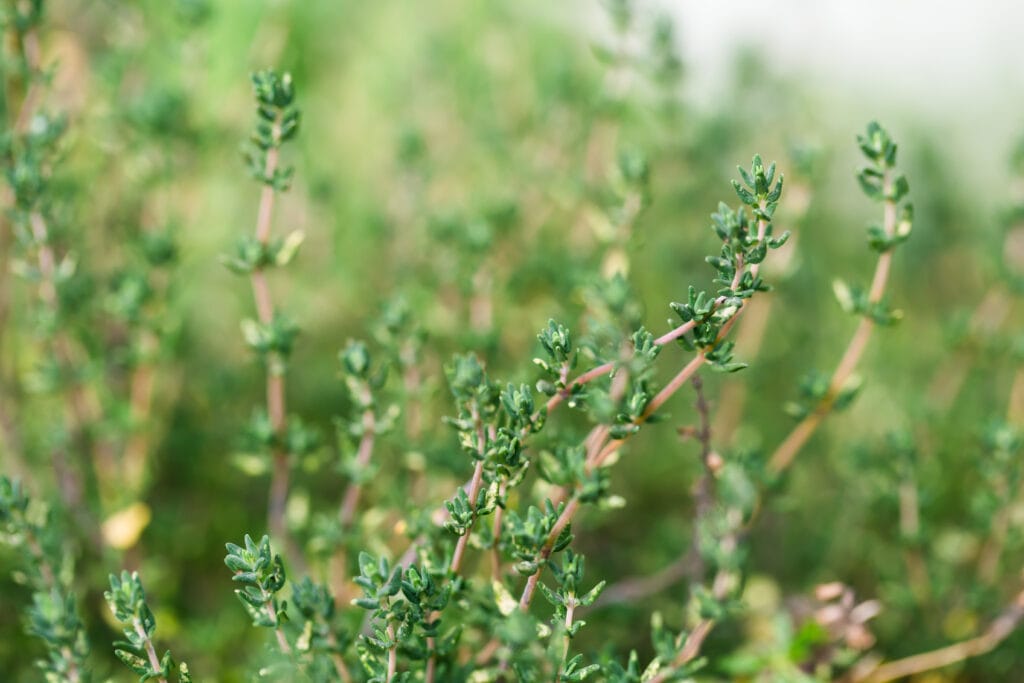
If you do not have the time or ability to Grow Thyme indoors, then you can follow the QUICK & EASY Steps below to Growing it from seed outside!
Step 1 – Plant 2 Week After the Last Frost!
- You will want to sow or plant your thyme seeds outside 2 weeks after the last frost of the year.
- You should find a location in full sun and well-draining soil.
- Plant 2 seeds in a pencil-tip deep hole to ensure a greater success of germination (popping through the soil).
- Space each pair of thyme seeds approximately 2 feet from the next pair of seeds
As discussed above, thyme grows best next to strawberries, tomatoes, and cabbage.
- Using a water bottle or a hose gently mist your seeds 5 to 10 times.
- You will repeat the process twice a day until your seeds germinate (pop through the soil).
- It will take approximately 14-21 days for your seeds to germinate. Replant seeds if they do not germinate within 3 weeks!
Step 2 – ALWAYS Keep the Soil Damp
- After your seeds germinate, continue spraying your thyme twice a day for about 3-4 weeks. After this, you can water once a day for 30 seconds.
- You should then be able to harvest your Thyme within 10 weeks from the time your seed germinates.
If you want to learn how to grow Thyme in a garden then I recommend watching the below tutorial video:
Frequently Asked Questions (FAQ)
#1. How Should I Care for my Thyme?
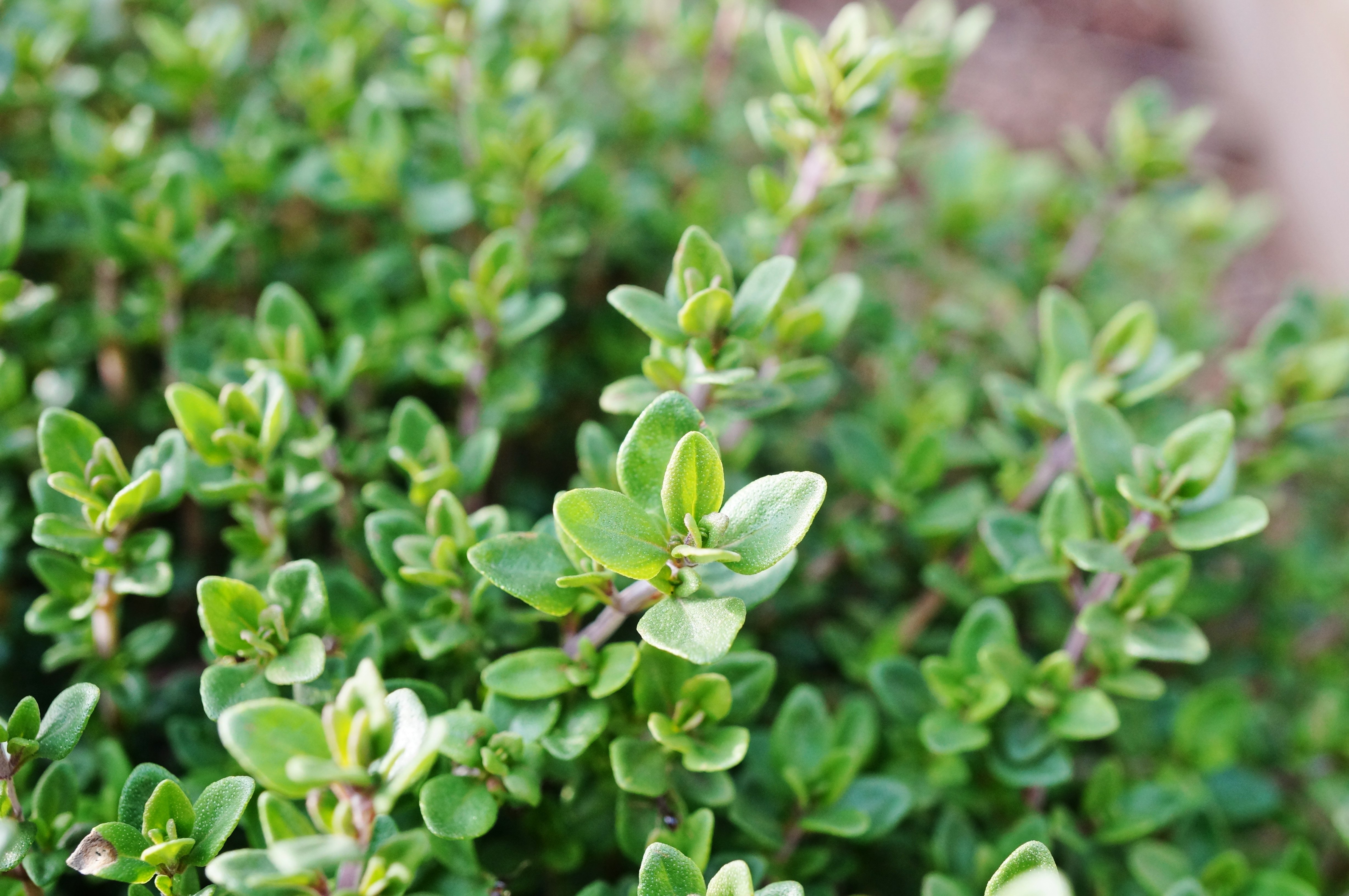
There are 6 essential techniques you should do when caring for thyme.
1. Use the Right Soil Mix
- Thyme grows best in well-draining soil. I recommend adding Compressed Soil to your garden if it does not drain well.
- You also want to ensure your soil is between a pH level of 6.5 and 8.5. You can test your soil with a pH meter.
2. Use Fungicide in the Spring
- Thyme rarely has problems with insects of pests like rabbits or deer, so do not use insecticide.
- In early spring or if you live in an area that is constantly damp or receives a lot of rain use a fungicide to prevent gray mold from appearing and destroying your thyme.
3. Water Deeply
- In the summer, water your Thyme daily for about 30 seconds when the soil becomes completely dry. You may have to water in the morning and evening if you live in a warm climate.
4. Prune Your Thyme
- In the spring and summer prune your Thyme to contain growth and promote more flavorful growth.
5. Mulch around Your Thyme
If you live in an area that has very cold winters then you will want to mulch around your Thyme before the first frost of the year.
6. Divide Older Thyme
Once your Thyme becomes 3 to 4 years old it will lose its flavor. Because of this, you will want to divide your Thyme into 3 or 4 new plants to increase flavor or replace it with my plants.
#2. How Do I Harvest Thyme?
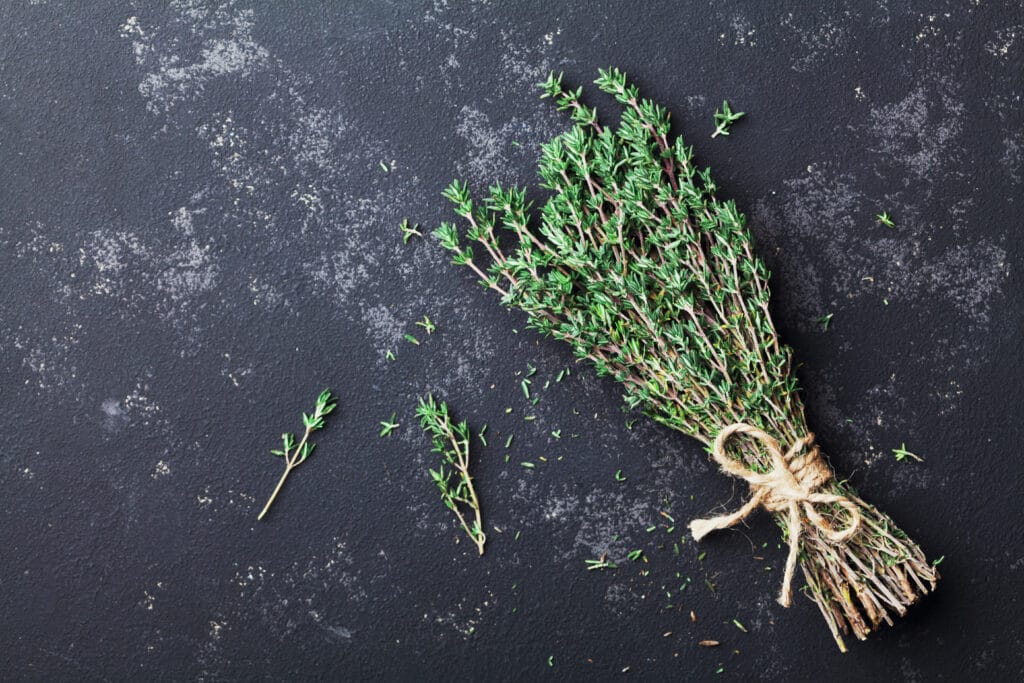
Thyme is a relatively easy herb to harvest and there are 3 best ways to harvest thyme.
1. Harvest Thyme Before it Flowers
- Harvest your Thyme just before it begins to flower. Cut off 5 to 6 inches from the top, leaving just the woody brown part of the plant. It is recommended harvesting two plants at a time for the best results.
2. Harvest Thyme in the Morning
- Harvest your Thyme just after the dew has dried in the morning. This will provide you with the most flavor. Never wash your Thyme after harvesting as it will reduce flavor and aroma.
3. Harvest Thyme Early and Often
- If you want to enjoy Thyme throughout the entire summer and fall then you will want to harvest it early and often. This will promote extra and flavorful growth.
- When harvesting Thyme keep 5 inches of green stem to encourage growth throughout the entire season
Below is a tutorial video on How to Harvest Thyme
How Do I Store Thyme?
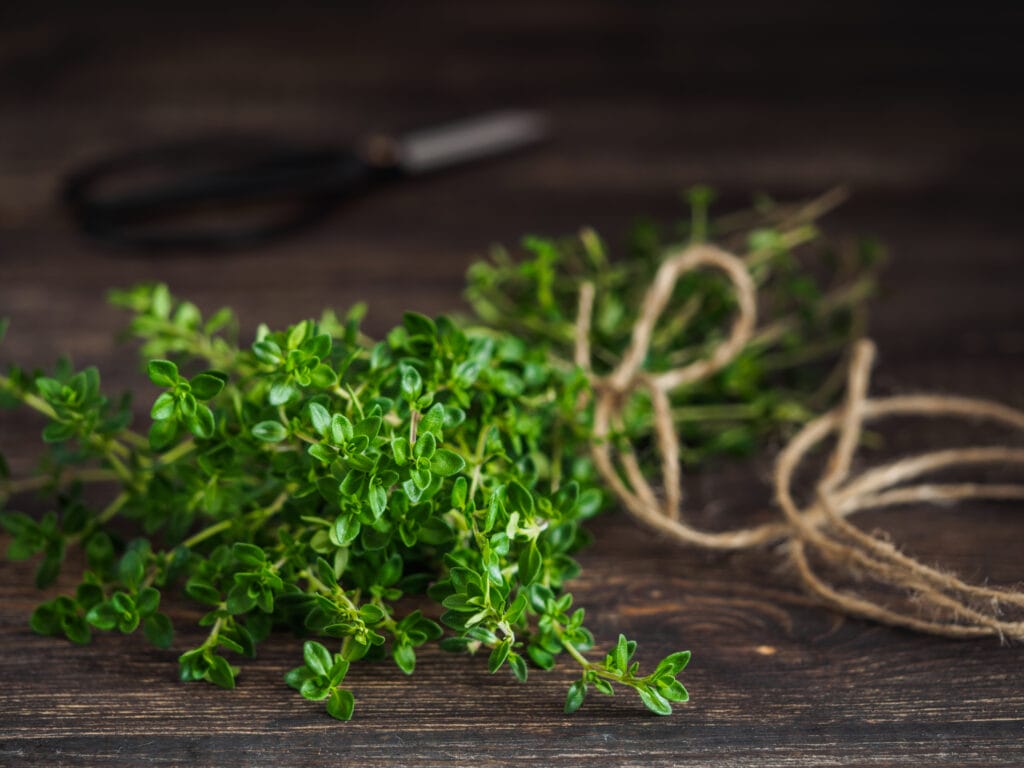
If you do not plan on using your thyme right away, there are 3 Effective Ways to store it!
1. Refrigerate Thyme Not Immediately Used
- If you plan on using your Thyme 1 to 2 weeks after harvesting then lightly wrap it in a damp paper towel and plastic and store it in your refrigerator.
2. Freeze Thyme for use up to 1 Year
- If you want to store your Thyme for up to 1 year then freeze it. To freeze your thyme, wash it, pat it dry, and then put them in a freezer bag.
3. Dry Thyme for Use After 1 Year
- Most gardeners prefer cooking dried thyme then fresh. And if you want to use thyme for periods over a year then you will want to dry it
Below, is a great video teaching you how to dry
Best Ways to Use Your Thyme
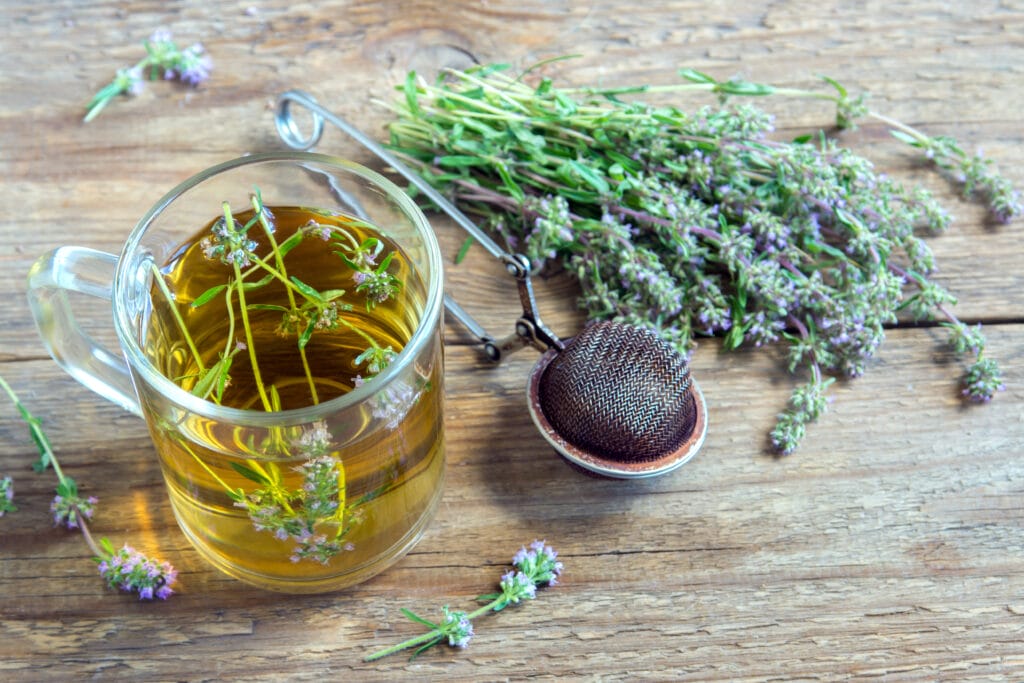
There are numerous ways to use your Thyme. Below, are some of the most effective ways to use Thyme:
1. Use Thyme in Cooking
- Common Thyme is a great herb that can add flavor to almost any dish. You can see some of my favorite recipes HERE.
- Some of my favorite ways to use Thyme is in chicken dishes, with carrots and brown butter, on grilled flank steaks, in a butter sauce for fish, and even in cookies!
2. Use Thyme for Medicinal Purposes
- Thyme flowers, leaves, and oil have been used for many medicinal purposes. Some of these uses include treating diarrhea, stomach ache, arthritis, and sore throats.
- For medicinal purposes, Thyme is best used in tea, oil applied to foods, or oil applied to air diffusers.
3. Use Thyme to Repel Mosquitoes and Pests
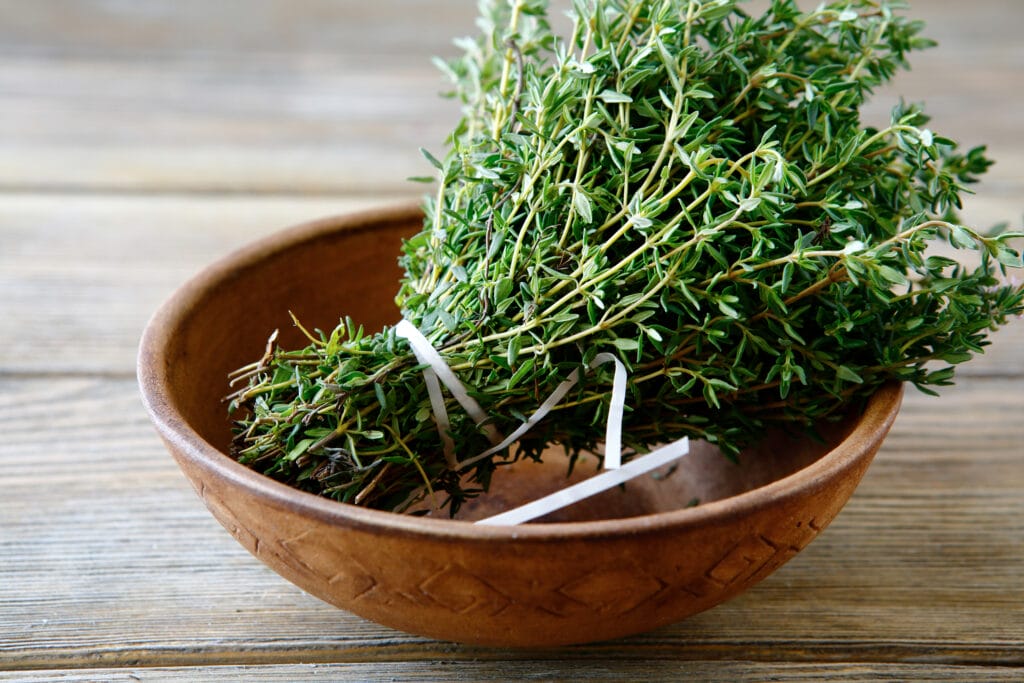
Thyme is one of the best plants to repel mosquitoes, rabbits, and deer.
You can burn Thyme in fires to prevent mosquitoes, you can also apply thyme oil on your skin to prevent mosquito bites.
You can also plant thyme next to plant you don’t want rabbits or deer to eat. These two pests will stay far away from Thyme and plants around it.
- Related: How to Keep Deer Out of Your Garden
- Related: How to Keep Rabbits Out of Your Garden
- Related: Best Natural Mosquito Repellent Plants
Conclusion
After reading this article you should now have a much better idea on How to Grow Thyme indoors and in a garden!
As a reminder, the below tips will help provide you with the greatest chance of success of Growing Thyme:
- Grow Common, Lemon, and Woolly
- Start your seeds 8-10 weeks before the last frost (indoors) or 2 weeks after the last frost (outside)
- Provide your plant 8 hours of sunlight and keep it in 70 degrees Fahrenheit.
- At 3 inches, transplant your thyme into a larger container or into a garden
- Use fungicide early
- Harvest your thyme early and often
- Drying your thyme is the best way to store it long-term
If you enjoyed this article then please read my other articles: